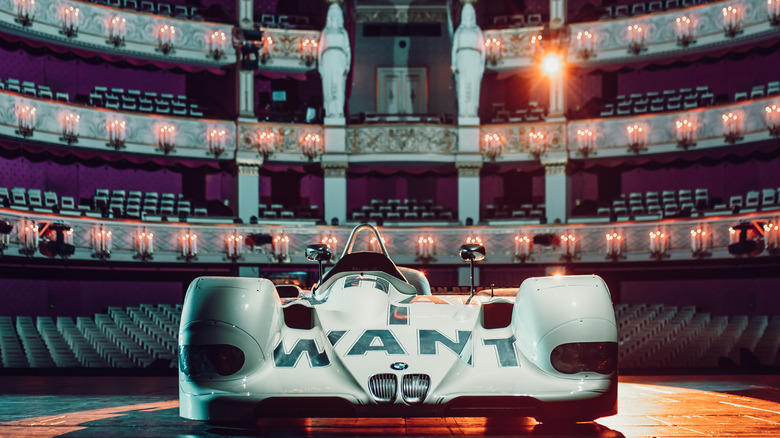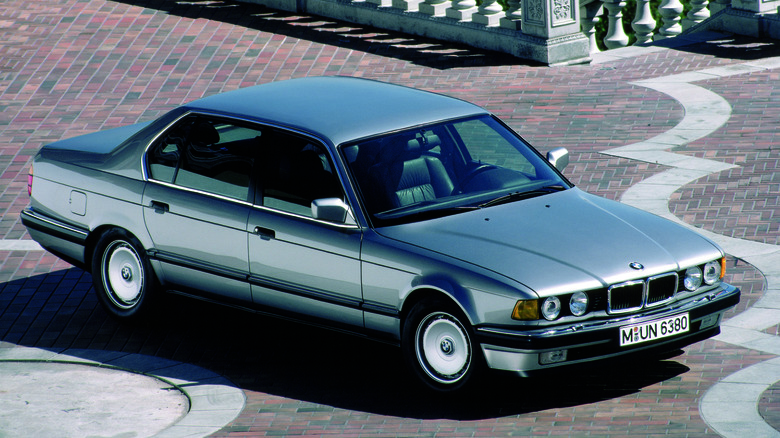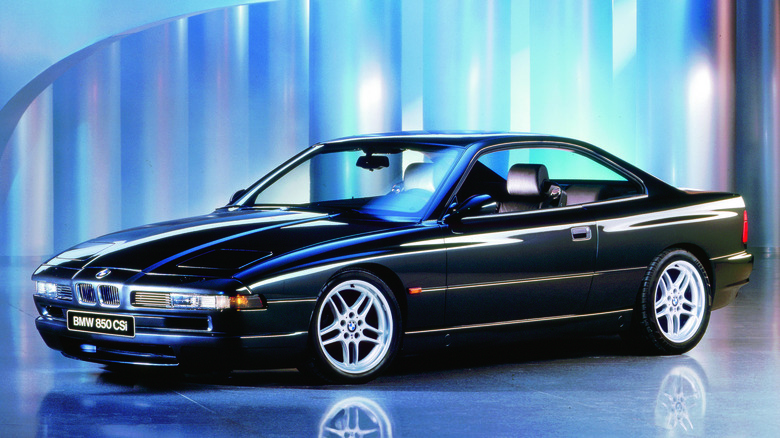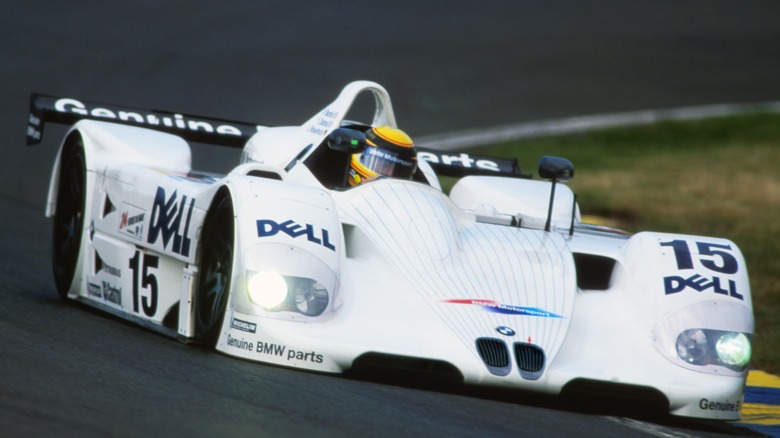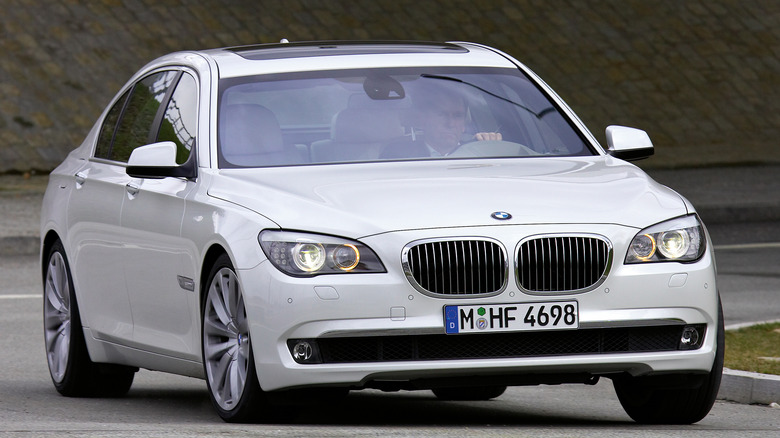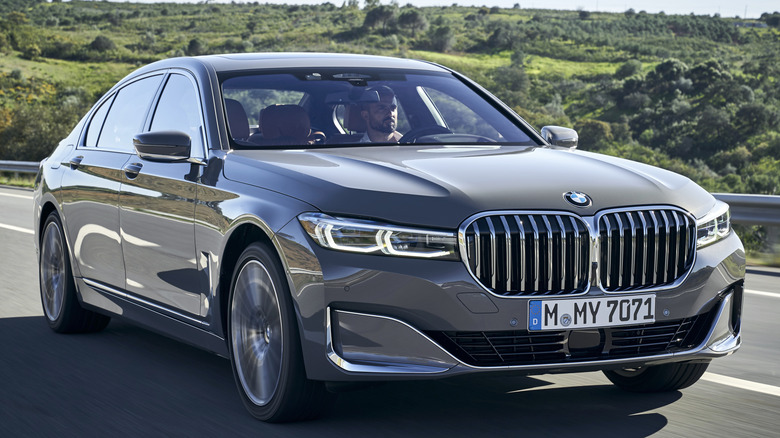5 Legendary BMW Models Powered By A V12 Engine
The BMW V12 engine was used in several BMW models, had its time in the sun, and was then discontinued as emissions and fuel economy concerns took precedence over the V12's inherent qualities of smooth and effortless power production. Arriving in 1988, the BMW V12 engine steadily evolved in both power output and technical sophistication over its 34-year history as the brand's top-tier powerplant. This amazing engine powered BMW luxury sedans, high-performance sport coupes, and even victorious racing cars during its reign. It can truly be considered one of the best V12 engines ever made.
While this article is limited to BMW vehicles equipped with the marque's V12 engine, it should be noted that a special version of the BMW V12 also found its way into the groundbreaking and incredibly fast 1992 McLaren F1 supercar (which also won at Le Mans in 1995). And though there are no longer any BMW vehicles with a V12 under the hood, the engine continues to be used by BMW's Rolls-Royce division to power all of its internal-combustion engine vehicles.
The lead image was shot in 2021 to commemorate BMW's becoming a Global Partner with the Bavarian State Opera (Bayerische Staatsoper), for which it placed BMW's V12 LMR Art Car, created by Jenny Holzer and also featured below, on the stage of the Munich Opera House.
1988 BMW 750i
The first appearance of the BMW V12 in the U.S. was in the 1988 750i, the new top-dog version of the E32 7-Series sedan. BMW essentially took two of its SOHC M20 2.5-liter six-cylinder engines, placed them at a 60-degree angle with a common crankshaft, and created the M70 5.0-Liter V12 with 295 horsepower and 332 lb-ft of torque. Other details included an Alusil alloy engine block, hydraulic lifters, mass-airflow sensors, and drive-by-wire throttle activation.
While BMW engineers took steps to reduce the engine's intake and fuel injector noise, it still took two separate ECUs (Engine Control Units) to run this complex engine. BMW's V12 engine designers also reduced the M70's weight and size as much as possible, making it lighter than its competitors' V8s while keeping it shorter than BMW's own 3.5-Liter inline six. A contemporary road test of the 1988 BMW 750i produced a 0-60 mph time of 6.5 seconds, with a quarter-mile time of 14.8 seconds at 96 mph. It did not stop accelerating until it hit 158 mph.
The longer-wheelbase L version of the 750i (named the 750iL) provided an additional 4.5 inches of rear seat room, and offered luxury features like: heated and adjustable front and rear seats, leather-covered dash and door panels, hands-free car phone, dual-zone climate control, powered sun shades, wine cooler, headlight washers, and a CD changer. That was a lot for 1988, even in a top-level luxury sedan like the 750i, whose price was around $70,000 at the time.
1994-95 BMW 850CSi
After moving up toward Bentley and Rolls-Royce territory with the V12 750i sedan, BMW was ready to make a move against Ferrari and its legendary V12 cars. While an M8 never came to pass, BMW engineers took some major steps in that direction. BMW increased the V12's displacement to 5.6 liters, boosted its output to 375 horsepower, paired it with a six-speed Getrag manual transmission, and dropped it into its 8-Series Coupe. With only 1,510 examples made, the 850CSi is a very rare V12-powered BMW.
The BMW 850 CSi may not have been an M8, but it came close. In addition to the brawnier V12, the 850CSi had faster steering, a firmer and lowered suspension, and even rear-wheel steering (Euro models only). Its 0-60 mph time was six seconds, and it had a top speed electronically limited to 155 mph.
The rarity and higher capabilities of the BMW 850CSi are reflected in current online auction prices. Compared to the standard V12 850i model that has mostly depreciated into "old German luxury car" territory, 850CSi sales have ranged from $55,000 to $84,000, with exceptional examples (including Euro models with rear-wheel steering) going as high as $155,000 within the past year.
1999-2000 BMW V12 LMR
The 1999-2000 BMW V12 LMR was the V12-powered race car that brought BMW victory in that year's 24 Hours of Le Mans endurance race. Its record during its short two-year reign included seven wins, five second-place finishes, and eight thirds. That's 20 podiums in 18 races (two cars were entered in most races, with three at Le Mans), an excellent record.
BMW's mid-engine V12 LMR used the S70/3 engine, an evolution of the BMW V12 that won Le Mans in 1995 in a McLaren F1. The S70/3 had a 6.0-liter displacement, with 4 valves per cylinder, and a 11.0:1 compression ratio. It drove the rear wheels through a sequential six-speed transmission and was naturally aspirated, putting out 580 horsepower and 500 lb-ft of torque.
The LMR's chassis was a carbon fiber and aluminum honeycomb monocoque designed by Williams, with double wishbone suspension using pushrod-actuated coil springs. Weighing 1,984 pounds, it had a top speed of 217 mph. Compared to its competition, the V12 LMR was very easy to drive, with better fuel economy that meant fewer fuel stops — ideal for endurance racing.
While the BMW V12 LMR's inaugural win at Sebring was well-earned, its Le Mans win was more complicated: 20 minutes into the race, a Mercedes-Benz CLR was sent flying through the air and crashed, causing the team to withdraw from the race. The faster Toyotas remained as the only threat until an accident and a blowout took them out of contention, and BMW prevailed.
2009 BMW 760Li
The 2009 BMW 760Li raised the stakes by adding twin turbochargers to the previously naturally-aspirated V12. This upped the horsepower to 544 and the torque to 531 lb-ft. This was a totally new all-aluminum V12 that incorporated infinite double-VANOS camshaft adjustment and direct injection. Forged connecting rods and crankshaft, along with iron-coated aluminum pistons, helped to make the idling of the engine imperceptible to the occupants. Acceleration from 0-60 mph was under 4.5 seconds.
Another mechanical upgrade was the new ZF eight-speed automatic, which replaced the previous six-speed. This new transmission weighed about the same as the six-speed and allowed gears to be smoothly skipped as needed, with maximum spontaneous acceleration available when the gearbox shifted directly from eighth gear down to second.
Other performance-related features on the 2009 BMW 760Li included Driving Dynamics Control, accessible through a center console rocker switch and Dynamic Damping Control, courtesy of its quick-reacting shock absorbers. Dynamic Drive, an anti-roll stability system, and speed-sensitive power steering were also standard equipment, as was self-leveling rear air suspension.
Comfort and convenience were not neglected on the top-tier 760Li, which was priced at $139,125 in 2009. In addition to the novel on-board navigation, you also got "Comfort" seats, four-zone automatic climate control, soft closing doors, Park Distance Control, and cruise control with automatic braking. Nappa leather covered the dash, and unique burled walnut trim graced the interior. Outside, wider kidney grilles and quad exhaust told the world you were driving the top BMW.
2022 BMW M760i xDrive Final V12
The last hurrah of the BMW V12 engine is the limited edition 2022 BMW M760i xDrive Final V12, a batch of 12 cars made for the U.S. market. These were offered only to BMW clients who had a history of V12 7-Series purchases. Priced at $200,000 plus destination, the M760i xDrive Final V12 comes with unique 20-inch wheels. It can also be optioned with any of the BMW Individual upholstery and paint options.
The twin-turbo V12 engine powering the Final V12 produces 601 horsepower and 627 lb-ft of torque, a noticeable step up from the impressive 2009 760Li's V12. Paired with an eight-speed automatic transmission channeling power to all four wheels, the M760i xDrive Final V12 is capable of 0-60 mph in 3.6 seconds, nearly a second faster than the 2009 model. Additional performance enhancements include M Sport brakes with either black or blue calipers.
As a high-end luxury car, the Final V12 was sent out the door with full merino leather, piano black interior trim, panoramic sky lounge LED roof, luxury rear seating package, Bowers & Wilkins surround sound system, adaptive LED lighting, and remote control parking. Of course the Final V12 is all about the end of the V12 line, which means that the badging is strong with this one. The center console, the threshold plates, and the engine cover all receive a "THE FINAL V12" plaque. From the outside, a simple "V12" badge replaces the "M760i" identification that normally appears.
